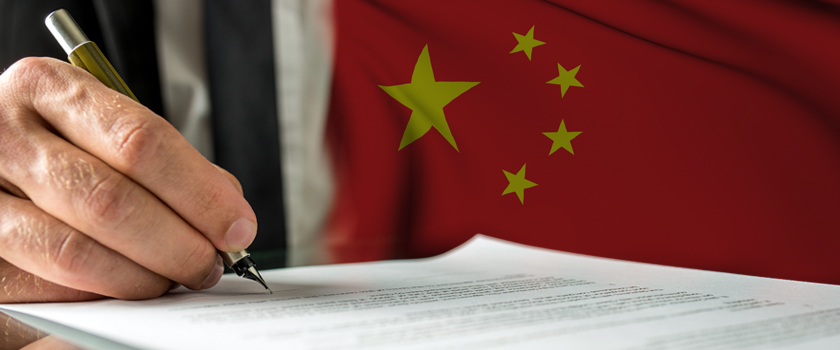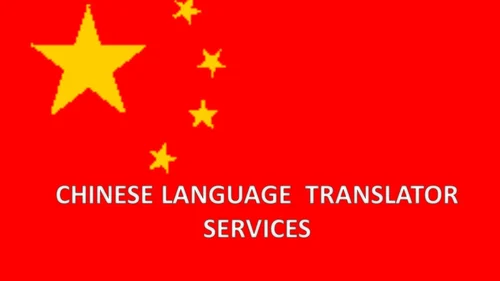Best Practices for Chinese Legal Translation Quality Assurance

In the field of global communication, accurate translation is of paramount importance, especially in legal contexts. To ensure the quality of Chinese legal translations, it is important not only to have language skills but also to understand the nuances of the legal system and cultural differences. This comprehensive guide covers best practices for quality assurance in Chinese legal translation and provides valuable insights and strategies to keep your translations accurate, consistent, and reliable.
Table of Contents
- Understand Chinese legal translation
- Importance of quality assurance
- Skills required for translators
- Terminology management
- Understanding context
- Cultural considerations
- Legal knowledge
- Review and revision process
- Technology integration
- Compliance with industry standards
- Customer communication and feedback
- Continuing professional development
- Case study: Learn from example
- Common challenges and solutions
- Future trends in Chinese legal translation
- FAQ
- What are the key elements of quality assurance in Chinese legal translation?
- How can translators effectively manage complex legal terminology?
- What role do cultural considerations play in Chinese legal translation?
- How can technology improve the efficiency and quality of Chinese legal translation?
- What common challenges do Chinese legal translators face?
- How can translators stay up to date with evolving legal terminology and industry trends?
- Conclusion
Understand Chinese legal translation
Chinese legal translation is the translation of legal documents translation, contracts, patents, and other legal materials from Chinese to another language and vice versa. It requires not only language skills but also a deep understanding of legal terminology, institutions, and cultural nuances.
Importance of quality assurance
Ensuring the highest quality assurance standards for Chinese legal translation is essential to avoid misunderstandings, inaccuracies, and legal complications. This builds trust, ensures compliance, and increases the credibility of translated materials.
Skills required for translators
Translators involved in legal translation into Chinese must possess a variety of skills, including fluency in Chinese and the target language, strong research skills, attention to detail, and legal knowledge. Additionally, cultural competency and critical thinking are essential to accurately convey the intended meaning in any language.
Terminology management
Effective terminology management is critical to maintaining consistency and accuracy in Chinese legal translations. Glossaries, terminology databases, and specialized dictionaries help translators adhere to established terminology conventions and ensure consistency in translated documents.
Understanding context
Chinese legal translators need to go beyond literal translation and understand the complexities of a legal document’s context. By understanding the target audience, legal framework, and specific requirements, translators can accurately convey meaning while taking cultural and linguistic nuances into account.
Cultural considerations
Cultural considerations play an important role in Chinese legal translation, as legal concepts and practices can vary widely from culture to culture. Translators must skillfully manage these differences to ensure that the translated document conforms to the cultural norms and expectations of the target audience.
Legal knowledge
A solid foundation in legal principles and terminology is essential for Chinese legal translators. Familiarity with the Chinese legal system, case law, and legal framework increases translation accuracy and ensures compliance with legal conventions in the translated material.
Review and revision process
To ensure the quality of your Chinese legal translation services, it is important to conduct a thorough review and revision process. Multiple rounds of editing, proofreading, and quality checks identify and resolve errors, inconsistencies, and ambiguities to ensure the accuracy and completeness of the final translation.
Technology integration
Translation technologies such as computer-assisted translation (CAT) tools, machine translation, and terminology management software can streamline the translation process and increase efficiency while maintaining quality standards. However, human oversight is still essential to ensure accuracy and account for complex linguistic and contextual nuances.
Compliance with industry standards
Adhering to established industry standards and best practices is paramount to maintaining the quality and integrity of Chinese legal translations. Compliance with ISO 17100 standards, adherence to professional codes of ethics, and ongoing quality assurance protocols ensure translations are consistent, accurate, and reliable.
Customer communication and feedback
Effective communication with clients is key to understanding their needs, preferences, and feedback for Chinese legal translation. Establishing clear communication channels, obtaining feedback, and addressing customer concerns promptly builds trust and ensures customer satisfaction.
Continuing professional development
Continuous learning and professional development are essential for Chinese legal translators to keep up with evolving legal terminology, practice, and industry trends. Attending training programs, attending workshops, and earning certifications will improve your skills, expertise, and credibility in this field.
Case study: Learn from example
Analyzing case studies and real-world examples of Chinese legal translation projects provides valuable insights into best practices, challenges, and effective strategies. Translators can hone their skills and approach and ensure quality and accuracy by reviewing successful translations and lessons learned from previous projects.
Common challenges and solutions
Complex legal terminology, cultural nuances, tight deadlines, and evolving legal frameworks pose challenges to Chinese legal translation, but with collaboration with subject matter experts, careful research, and the use of technology By using proactive strategies such as this, you can alleviate these challenges and make translation easier. Success Ensure results.
Future trends in Chinese legal translation
As technology continues to advance and global communication evolves, the landscape of legal translation in China is about to change. Trends such as AI-driven translation tools, blockchain technology for document verification, and remote collaboration platforms are likely to shape the future of the industry and create new opportunities and challenges for translators.

FAQ
What are the key elements of quality assurance in Chinese legal translation?
Quality assurance in Chinese legal translation includes linguistic accuracy, compliance with legal conventions, cultural sensitivity, and ensuring accuracy and reliability. includes a thorough review process.
How can translators effectively manage complex legal terminology?
Translators use glossaries, specialized dictionaries, and terminology databases, and conduct extensive research to ensure accuracy and consistency. You can manage complex legal terminology by consulting a legal expert for help.
What role do cultural considerations play in Chinese legal translation?
Cultural sensitivity is extremely important in Chinese legal translation to ensure that the translated document conforms to the cultural norms, expectations, and legal framework of the target group, thereby improving clarity and understanding.
How can technology improve the efficiency and quality of Chinese legal translation?
Technologies such as CAT tools, machine translation, and terminology management software can help maintain quality standards through human oversight. Streamline the translation process, improve consistency, and foster collaboration between translators.
What common challenges do Chinese legal translators face?
The most common challenges include complex legal terminology, cultural nuances, tight deadlines, and navigating an evolving legal environment. will appear. However, proactive strategies such as collaboration, research, and the use of technology can help effectively address these challenges.
How can translators stay up to date with evolving legal terminology and industry trends?
Translators can stay up-to-date on legal translation knowledge through continuous learning, participation in training programs and workshops, and certifications. Professional legal translation services networks and continued access to information about industry developments also facilitate continued professional development.
Conclusion
Ensuring best practices in Chinese legal translation quality assurance requires a multifaceted approach that includes language skills, legal expertise, cultural sensitivity, and technology integration. By following these best practices, translators can ensure the accuracy, consistency, and reliability of Chinese legal translations, promote effective communication, and foster cross-cultural understanding in the global legal environment.






